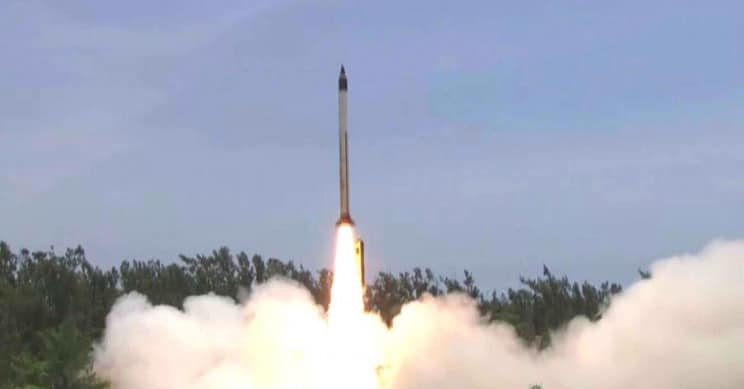India saw the first flight test of its hypersonic technology; the event marked the nation’s joining the hypersonic scramjet club. The Hypersonic Technology Demonstrator Vehicle had a scramjet engine and was launched from Dr. APJ Abdul Kalam launch complex. The news broke out in a press release by its Ministry of Defence.
Scramjets function at high speeds, and for that, it usually requires a rocket booster to accelerate to reach its optimum velocity. Once the scramjet reaches its point of activation, it can help accelerate the vehicle to the speeds equivalent to that of Mach 5.
The ScramJet Flew For 20 Seconds:
Whenever such a launch takes place, it makes the aerodynamic heat shields fall while the cruise vehicle gets undocked. The kerosene powered scramjet engine comes into effect as the demonstrator vehicle takes a loop for 20 seconds in the sky near the speed of a Mach 6, respectively.
The DRDO, while praising the successful mission of launch and testing the hypersonic technology, said that “key events such as fuel injection and auto ignition of scramjet showed technological maturity.”
India Proving Next-Gen Hypersonic Technology:
Forbes reports that the HSDTV aims to pave the path for proving next-gen technologies to be used in future weaponry. This test might have its one reason to show some show of power to the Chinese Navy, which might motivate Chinese authorities to go further with anti-ship ballistic missiles.
Hypersonic scramjet vehicles lose range with speed:
The objects at such high velocities are difficult to counter; hence it gives the hypersonic missiles a substantial tactical advantage. India, with this test, has joined the exclusive club of hypersonics, and now is a member amongst Russia, China, and that the U.S. The methods of war have mainly changed. However, the similar thing is that still, the super-powers of the world are progressing towards increasing their respective military might.

